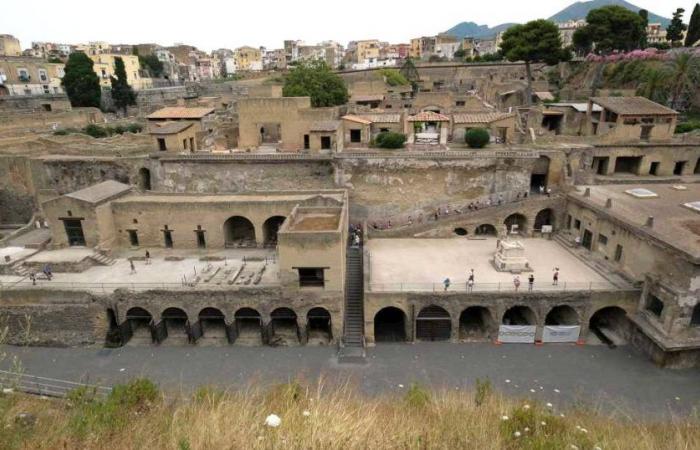Years of excavations and restoration have made it possible to exhume this site of the ancient city of Herculaneum, less known than that of Pompeii, but where three hundred people perished under the lava almost two thousand years ago.
An important part of history resurfaces. An ancient beach located inside the Italian archaeological park of Herculaneum (Ercolano, today) reopened its doors to the public on Wednesday June 19, after years of excavation and restoration work. It is “an extraordinary and unique place in the world”, welcomed Francesco Sirano, the director of the archaeological park cited by the Guardian.
It was indeed there that three hundred people were buried during the eruption of Vesuvius in 79 AD, while they were probably waiting to be rescued by rescuers led by Pliny the Elder, then local military official.
Sand was brought to the site, so visitors could experience a beach as close as possible to the original, before the eruption. The water is however far away, since the solidification of the burning flow has caused the shore to advance by 500 meters. “If we look towards the place where the sea was once located, we become modern explorers of the immense mantle of lava which covered the city in a few hours, almost sharing the feeling of total annihilation”, to souligné Francesco Sirano.
Before getting there, ““It was not only a question of restoration work, but also of tremendous research work, because reopening a place in an open-air archaeological site also has a scientific dimension.” also clarified the director of the archaeological park, this time to CNN. And the scientist details : “We carried out excavations, found remains and lava flows that hit the city with materials of all kinds.”
The archaeological site of Herculaneum is less illustrious than that of its neighbor Pompeii. The first victims of the Vesuvius eruption were only discovered there during excavations carried out in the 1980s and 1990s. One of them was nicknamed “the lady with the rings”, because of the rings discovered on her left hand. The remains of a man were discovered again recently, in 2021: those of a forty-year-old who could have been a rescuer or a man trying to flee.
“Herculaneum, Pompeii, Oplontis: we are working on many projects”, said the Italian Minister of Culture, Gennaro Sangiuliano, specifying that the government had decided to provide new funding for the excavations. “There are more active sites than ever, which are bringing new treasures to light.”






